Stop Vole Damage Loss: Richmond Spring Garden Rescue (53)
Quick Summary
- Discovering vole damage (lawn runways, chewed plants) is common in Richmond and Ottawa after snow melt.
- Voles thrive under snow cover, causing damage unseen during winter.
- Identify voles (stocky, short tail) vs. moles (deep tunnels) or mice.
- Repair lawn runways by raking, topdressing, and overseeding.
- Prevent future damage with fall cleanup, tree guards, and habitat modification.
- Professional help is available for extensive damage repair and cleanup. Request a quote today!
Introduction: Uh Oh, Voles! That Wasn't the Spring Surprise You Wanted in Richmond
Ah, spring in Richmond! The snow *finally* melts away, the birds are singing, and... uh oh. What are those weird trails crisscrossing your lawn? And why do the bases of your favourite shrubs look suspiciously chewed? If you're staring at a network of grassy tunnels and damaged garden beds after the big thaw, you've likely had some uninvited guests spending the winter under the snow cover. Welcome to the not-so-charming spring surprise brought to you by voles!
These tiny terrors absolutely love the protection Ottawa's snowy winters provide. Hidden from view, they create extensive runway systems right under the snow, munching away happily on grass stems, plant roots, and tree bark all winter long. Homeowners from nearby Greely and Manotick to right here in Richmond often discover this landscaping headache only when the snow recedes, revealing the maze-like damage beneath. Don't despair! Seeing your carefully tended lawn or garden looking like a vole highway is frustrating, but you're definitely not alone. Let's talk about these critters and what you can do to reclaim your yard. Visit our main services page to see how we can help.
Meet the Garden Saboteurs: Understanding Voles in the Ottawa Valley
Okay, let's get properly acquainted with these furry little troublemakers. Voles! You might hear them called meadow mice, but don't let the name fool you – they're not *quite* mice, and they're certainly not moles. Think of them as the stealthy vegetarians of the rodent world, living life large (and largely unseen) in your Ottawa Valley garden.
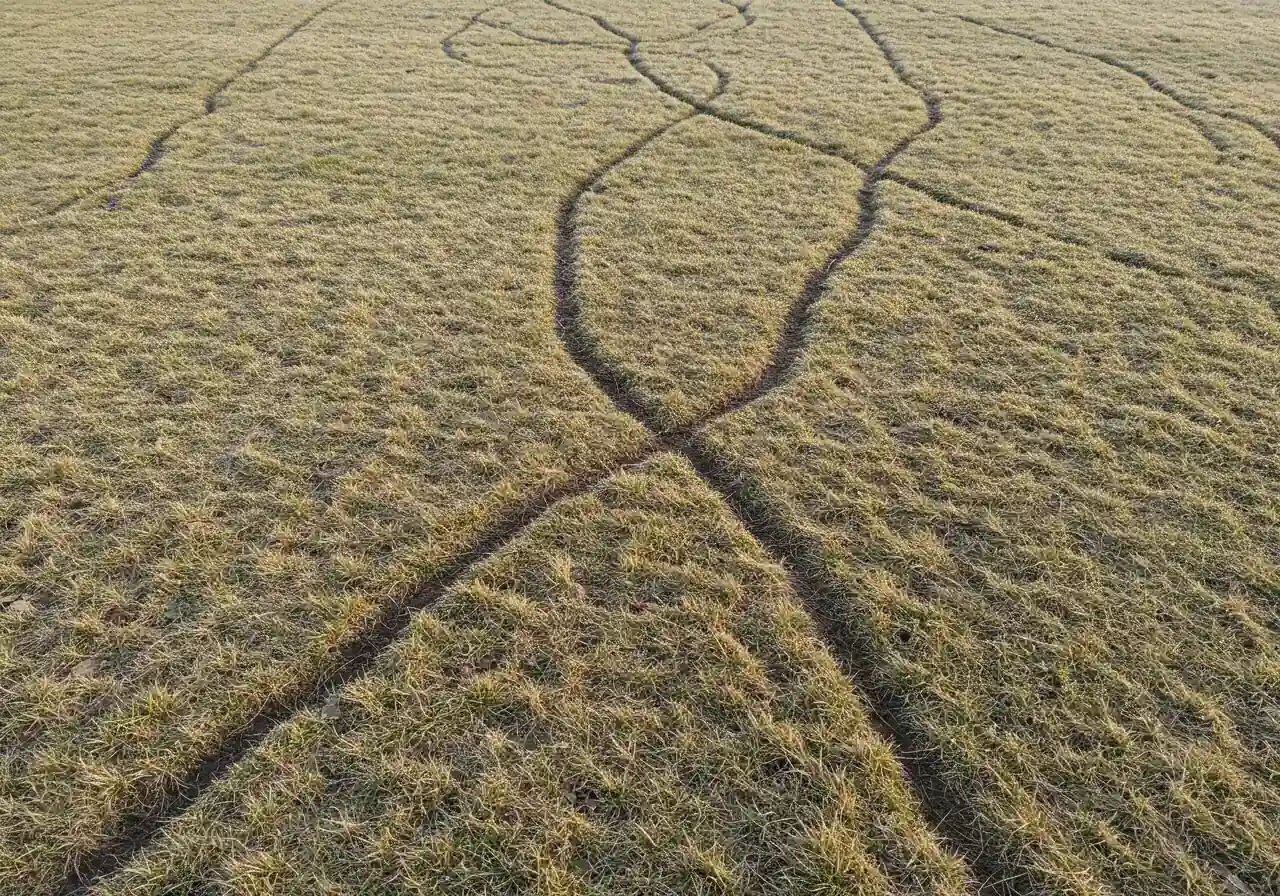
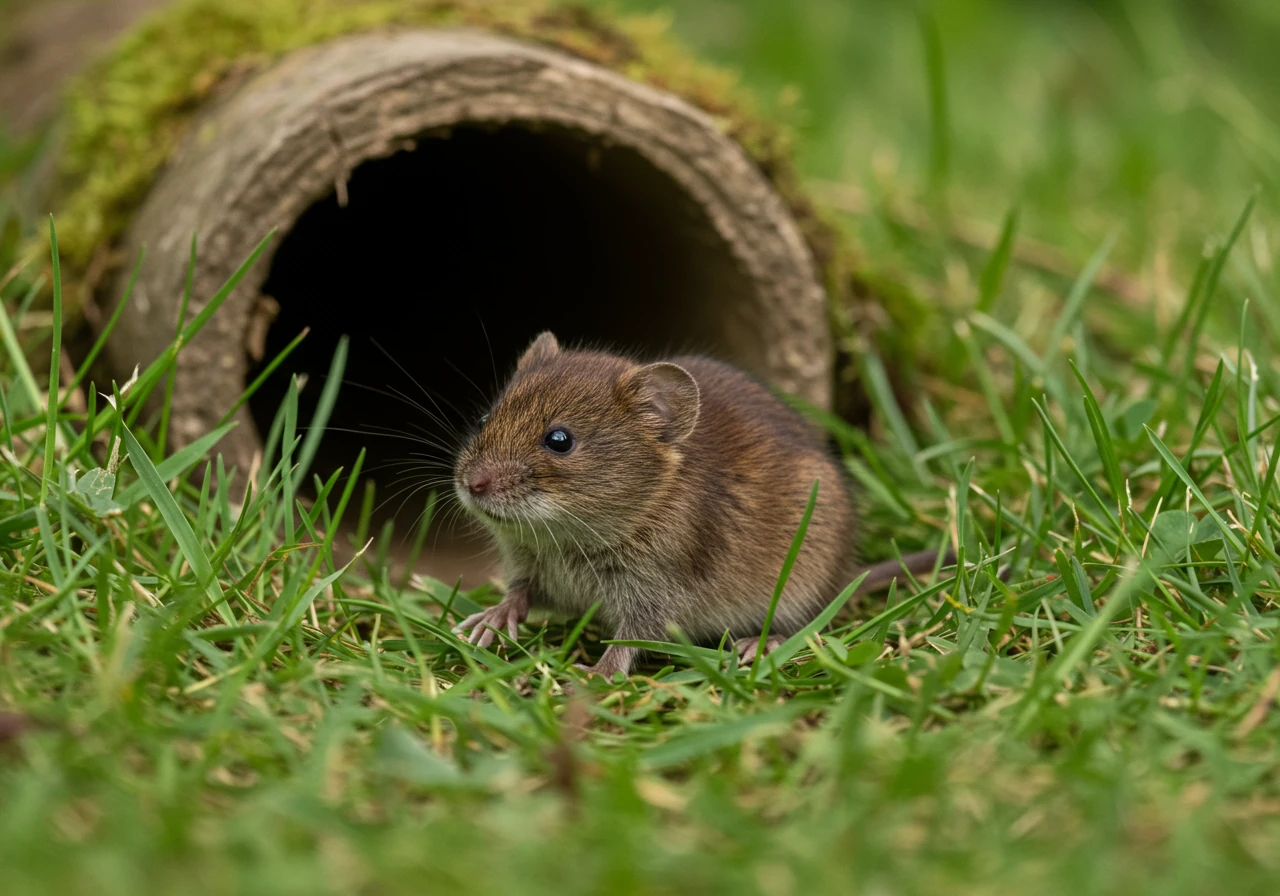
- What are they? Voles are small rodents, typically 10-20 cm long, with stout bodies, short tails, small ears often hidden by fur, and blunt noses. They look a bit like field mice but stockier. Unlike moles, they aren't digging deep tunnels looking for worms; they're primarily plant-eaters.
- Vole Habits: These critters are active day and night, year-round. They create shallow, above-ground tunnels or "runways" through the grass, often hidden under mulch, dense ground cover, or, crucially for us here in Ottawa, snow cover. This network of paths allows them safe passage while they munch on grass stems, flower bulbs, vegetable roots, and, frustratingly, the bark of young trees and shrubs, especially near the ground level. This girdling can seriously harm or even kill plants. Recovering your garden from this kind of stress is vital, much like the careful steps needed for Manotick ice storm garden recovery.
- Signs You Have Voles: Come springtime in areas like Greely or Osgoode, the melting snow reveals their handiwork:
- Winding, crisscrossed paths about 2-5 cm wide on the lawn surface where grass has been eaten away.
- Gnaw marks around the base of trees and shrubs, sometimes completely circling the stem.
- Disappearing bulbs or damage to root vegetables.
- Small burrow openings (usually neater than molehills). Identifying the culprit is key; it's different from needing help to Metcalfe garden recovery fix beetle damage summer, which requires other solutions.
Why the Ottawa Valley? Our region offers a vole paradise! Lush summer gardens provide ample food. Then, our reliable winter snowpack acts like a cozy blanket, insulating them and hiding their activity from predators (and us!). This protection lets them feast undisturbed all winter long. Sometimes, vole damage can even be confused with other winter issues, just as learning how to Kars fix frost damaged plants garden recovery involves understanding specific symptoms. Ensuring all aspects of your yard are ready for winter, including tasks like proper Nepean irrigation winterization avoid pipe damage, can help minimize potential hiding spots or related issues, though voles will still seek out protected areas around your landscaping.
Vole vs. Mole vs. Mouse: Who's Who?
It's easy to mix them up! Here’s a quick guide:
| Feature | Vole | Mole | Mouse |
|---|---|---|---|
| Appearance | Stocky body, short tail, small ears, blunt nose | Pointed snout, large front claws, tiny eyes/ears, velvety fur | Slender body, long tail, large ears, pointed nose |
| Diet | Plants (roots, bulbs, bark, stems) | Insects (worms, grubs) | Omnivore (seeds, insects, human food scraps) |
| Damage | Surface runways, gnawed plants/bark, eaten bulbs | Raised ridges/tunnels deep in lawn, volcano-shaped mounds of soil | Gnawed wires/food, droppings indoors/out |
Understanding these differences helps you target the right problem. Dealing with vole damage often involves habitat modification and specific control methods, which can be part of comprehensive landscaping and yard care. If the damage feels overwhelming, exploring professional Clean Yards services can provide expert solutions for your garden and lawn recovery. Check out our Google reviews!
The Spring Reveal: Why Vole Damage Peaks After Winter in Nepean and Beyond
It's a familiar scene across Ottawa, from Nepean to Barrhaven and beyond. The snow melts, revealing green grass… and a baffling network of shallow tunnels snaking across your lawn. You might also spot gnaw marks at the base of your favourite shrubs or young trees. So, why does it seem like voles launch an all-out attack the moment winter ends? Plot twist: they don't! The damage just becomes *visible* in spring.
Think of Ottawa's winter snowpack as a cozy, protective blanket for voles. This layer, called the subnivean zone, hides them from predators like hawks and owls, and just as importantly, from *us*. While we're inside sipping hot chocolate, voles are having a field day (literally!) beneath the snow. They don't hibernate, so they spend the winter months actively creating those surface runways by eating the grass stems right down to the crown. They'll also happily munch on tender bark near ground level and nibble on plant roots in your garden beds, all under the invisibility cloak provided by the snow.
The deeper and more consistent the snow cover, the safer the voles feel, allowing them to cause more widespread damage without interruption. Then, spring arrives! The snow melts, and *ta-da* – the evidence of their secret winter feasting is suddenly revealed. It looks like fresh devastation, but it's actually the result of months of hidden activity. This is why spring is peak "discovery" time for vole damage.
Seeing this intricate network can be disheartening, especially if they've girdled young trees or decimated parts of your lawn. The first step is usually a gentle raking to clear debris from the runways and encourage air circulation, which helps the grass recover. For more extensive lawn issues or significant damage to garden beds, sometimes bringing in help is the easiest path forward. Many homeowners find that engaging an expert Ottawa garden clean up service can make short work of the repairs. Dealing with vole aftermath is a common task, much like needing an Osgoode spring yard cleanup service after a long winter.
Preventing future infestations involves making your yard less inviting *before* winter, like keeping grass cut short in the fall and protecting tree trunks. Consistent upkeep is key; a regular city garden maintenance service can help manage potential vole habitats throughout the growing season. If you're assessing significant damage and wondering about repair costs, you can always get a free estimate and provide feedback to understand your options. While discovering vole damage is never fun, understanding *why* it appears in spring can make tackling the cleanup feel a little less daunting, and exploring professional property clean up services offers comprehensive solutions for restoring your landscape.
Damage Assessment 101: Scouting Your Property Like a Pro (From Metcalfe to Vernon)
Okay, the snow’s gone, and you suspect those little vole villains have been busy. Time to put on your detective hat and assess the situation! Scouting your property thoroughly, whether you're in bustling Barrhaven or the more spacious areas around Metcalfe or Vernon, helps you figure out the extent of the damage and plan your recovery mission. Let's break it down:
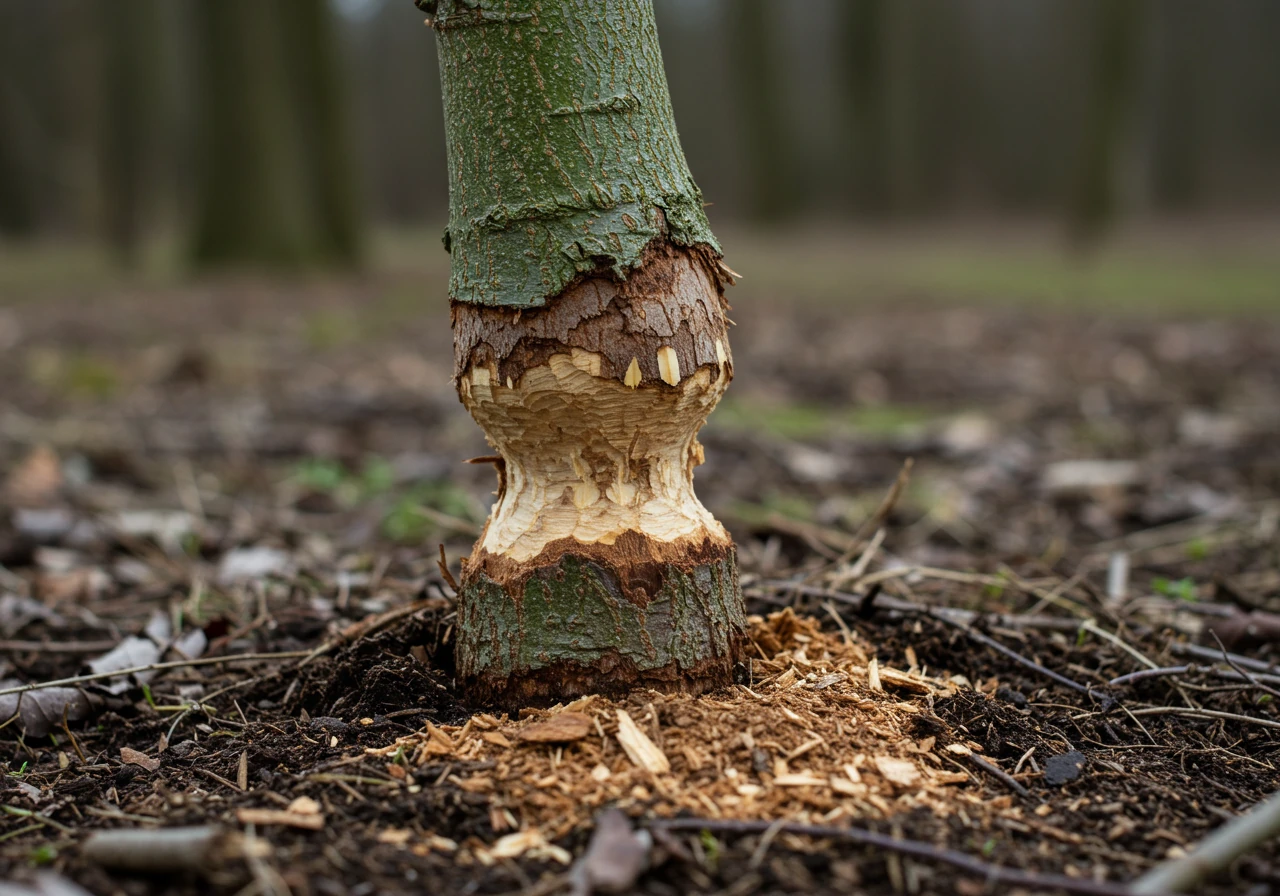
Step 1: The Great Grass Investigation
Grab a rake (gently!) and walk your lawn methodically. Look for:
- Surface Runways: These are the tell-tale signs – winding paths about 2-5 cm wide where the grass looks eaten down or dead. They often connect small burrow openings. On larger properties, like those common out near Vernon, these networks can be quite extensive.
- Dead Patches: Sometimes, areas connected by runways might look completely dead. Gently rake these spots to remove loose, dead grass. Healthy grass *might* recover, but severe damage could require reseeding or even new turf. If large sections are ruined, exploring options like professional sod installation services might be necessary.
Step 2: Garden Bed Reconnaissance
Move on to your flower beds and vegetable gardens. Voles love these spots! Check for:
- Missing Plants/Bulbs: Did those tulips you planted last fall disappear? Voles adore bulbs. Check for disturbed soil where plants *should* be.
- Gnawed Roots/Stems: Gently examine plants near the soil line. Look for chew marks on roots (if visible) or the base of stems, especially on soft perennials or vegetables.
- Burrow Holes: Look for small, neat holes (about 2-4 cm diameter), often hidden under mulch or plant cover. These are entrances to their shallow tunnels. Tackling this kind of mess often falls under spring cleanup duties; specialized help like a Marionville garden clean up service can address these specific garden issues.
Step 3: Inspecting Trees and Shrubs
This is crucial, especially for younger woody plants. Get down close to the base and look for:
- Girdling: This is the most serious damage. Check for gnaw marks around the bark near ground level. If the chewing goes all the way around the trunk (girdling), it can cut off nutrient flow and kill the plant. Look for irregular gnawing patterns with tooth marks about 1-2 mm wide. Distinguishing Tip: Rabbit damage is usually higher up (above snow line) and cleaner cut, while vole damage stays low to the ground.
Putting It All Together
Make notes or take photos of what you find. Is the damage widespread or localized? Is it mostly lawn, garden beds, or trees? This assessment helps you decide on the next steps, whether it's simple raking and overseeding, needing protective barriers for next winter, or calling in reinforcements. If the overall yard looks like a disaster zone after your inspection, a comprehensive Marionville yard cleanup service could tackle everything from lawn debris to garden tidying. For city dwellers facing similar issues, a focused city garden clean up service can restore order. Feeling unsure about the severity or how to fix it? Don't hesitate to request an estimate and share your findings to get professional advice tailored to your situation from teams who serve areas like Metcalfe and beyond. Good scouting leads to good solutions!
Proactive Prevention Strategies
The best approach is often making your yard less attractive to voles in the first place. Key prevention tactics include:
- Fall Cleanup: Essential! Mow lawn short, remove leaves and debris.
- Tree Guards: Use hardware cloth cylinders around young trees/shrubs.
- Habitat Modification: Keep mulch away from trunks, reduce dense ground cover.
- Vole-Resistant Plants: Incorporate plants like daffodils and salvia. See our material selection guide for ideas.
Active Control Methods
When prevention isn't enough, direct control may be needed:
- Trapping: Effective for small populations. Use snap traps in runways, covered for safety.
- Repellents: Castor oil or predator scents may offer temporary deterrence.
- Barriers: Hardware cloth is highly effective protection.
- Baits (Use with Caution): Rodenticides can work but pose risks to non-target animals. Always follow label directions strictly. Review our Terms and Conditions for service limitations.
Your Vole Battle Plan: Eco-Friendly Prevention & Effective Control Strategies
Okay, you've surveyed the damage, and maybe had a *slight* meltdown seeing those vole superhighways across your lawn. Deep breaths! It's frustrating, but entirely manageable. Think of this as Operation Reclaim Your Yard. We're going to build your Vole Battle Plan, focusing on smart, eco-friendly prevention first, backed up by effective control if needed. Let's get those furry little freeloaders packing!
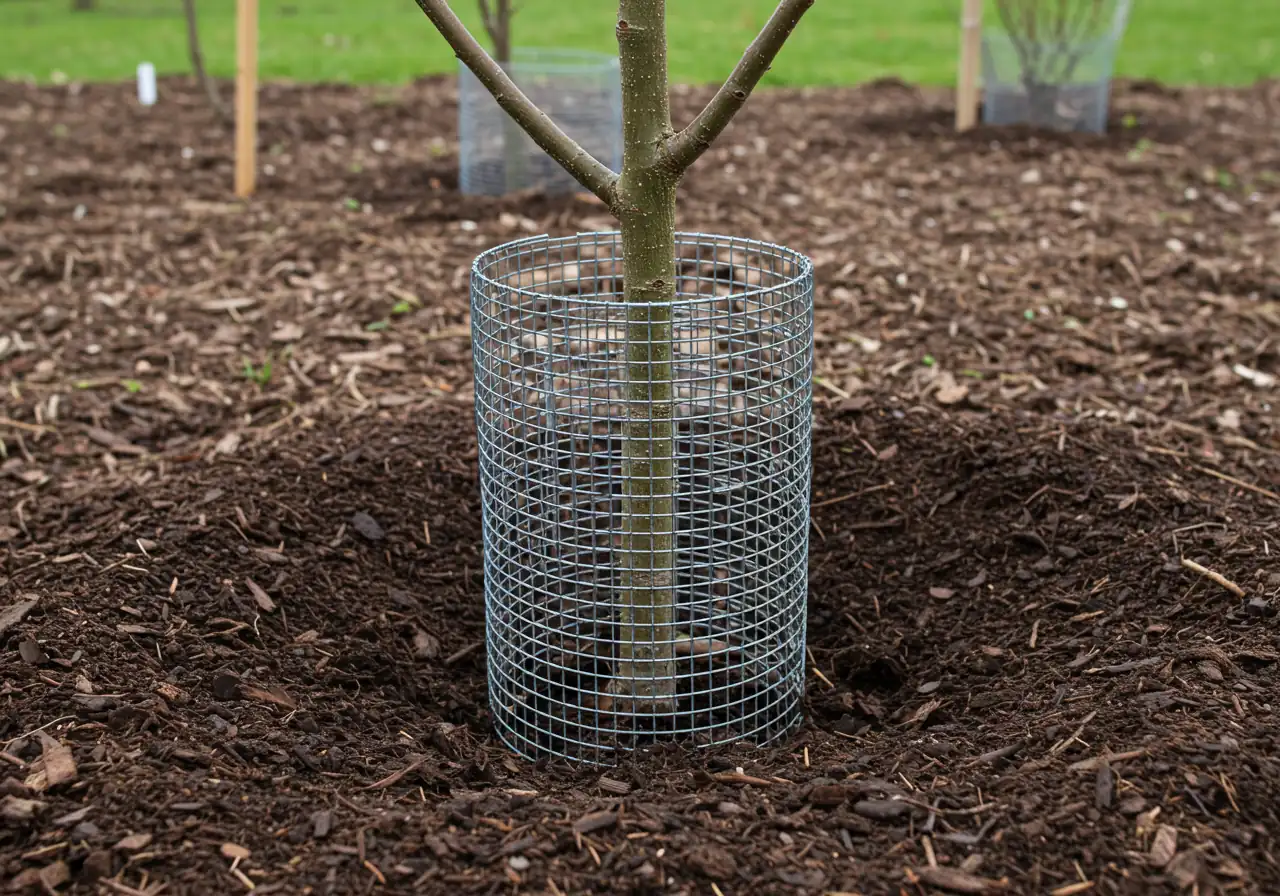
Phase 1: Make Your Yard Less Vole-Friendly (Prevention is Key!)
The best defense is making your property less appealing *before* voles get comfy. This is all about habitat modification:
- Tidy Up Time: Voles love clutter and cover. Keep your lawn mowed regularly, especially in the fall before snowfall. Don't let leaves pile up for too long – clear them out! Removing excess thatch and keeping garden edges neat eliminates hiding spots. A thorough fall cleanup is your secret weapon; consider it part of preparing your landscape for winter. Sometimes, getting professional help for this seasonal chore makes a huge difference; an expert Ottawa yard cleanup service can whip your yard into shape, making it less inviting for pests. Booking such services online is often straightforward, and reputable companies will have a clear Privacy Policy regarding how your contact information is handled.
- Create No-Vole Zones: Keep mulch and dense ground cover at least a foot away from the base of young trees and shrubs. Voles hate crossing open ground. Consider using gravel or crushed stone around vulnerable plants or garden beds; voles generally dislike digging through it. Choosing the right size and type is important, and exploring different options through a guide on landscaping material selection can help you find a practical and attractive solution.
- Physical Barriers: For precious young trees or shrubs, install barriers *before* winter. Use cylinders of 1/4-inch hardware cloth (wire mesh). Make them about 18-24 inches high and bury the bottom edge 3-6 inches deep to prevent voles from burrowing underneath. Ensure the cylinder is wide enough not to constrict the growing trunk.
- Plant Smart (Vole-Resistant Choices): While no plant is truly vole-proof if they're hungry enough, some are definitely less tasty. Consider incorporating these Zone 5-friendly options into your Ottawa garden:
- Daffodils (Narcissus): Their bulbs are toxic.
- Lenten Rose (Helleborus): Tough, leathery leaves.
- Salvia (Sage): Strong scent often deters them.
- Ornamental Grasses: Varieties like Switchgrass (Panicum virgatum) have tough root systems.
- Crown Imperial (Fritillaria imperialis): Known for a skunky odor voles dislike.
- Encourage Natural Predators: If you live in areas with more green space, like near Winchester or Kenmore, you might encourage vole predators. Hawks and owls are prime candidates (consider installing raptor perches). Even snakes (mostly harmless garter snakes!) and foxes help control populations. Minimize outdoor hiding spots for voles to make them easier targets for predators. (Just be mindful if you have free-roaming pets). You can find helpful resources from the Rideau Valley Conservation Authority.
Phase 2: Taking Action (When Prevention Isn't Enough)
Sometimes, despite your best efforts, you need direct intervention:
- Trapping: Standard mouse snap traps can be effective. Place them *in* the vole runways (look for those well-worn paths), perpendicular to the path, and bait with peanut butter mixed with oats. *Crucially*, cover the trap with a box or bucket with notches cut out for the runway – voles feel safer in tunnels, and it protects birds or pets. Check traps daily. Humane live traps are an option, but you'll need to relocate captured voles far away (check local regulations with the City of Ottawa Animal Care and Control).
- Pros: Targeted, confirms kill/capture, relatively inexpensive.
- Cons: Requires regular checking, dealing with dead or live voles, can be unpleasant.
- Repellents: Options include castor oil-based liquids/granules (thought to upset their digestion or coat their fur unpleasantly) and predator urine scents. Ultrasonic devices are also sold, but scientific evidence for their effectiveness is mixed.
- Pros: Non-lethal, less 'hands-on'.
- Cons: Often temporary effectiveness, requires reapplication (especially after rain), variable results.
- Baits (Toxic): Rodenticides specifically for voles are available. These usually contain anticoagulants. *Use extreme caution.* Place bait directly in burrow openings or within tamper-resistant bait stations as required by the label.
- Pros: Can reduce large populations effectively.
- Cons: HIGH RISK to pets, children, and wildlife (secondary poisoning of predators that eat poisoned voles). Not an eco-friendly choice. *Always* read and follow label directions meticulously. Consider this a last resort.
Making the Call:
Think about effectiveness vs. effort and environmental impact. Habitat modification and barriers are your *best* long-term, eco-friendly bets. Trapping is targeted but requires diligence. Repellents are less certain. Baits are effective but carry significant risks.
Once the voles are evicted, focus on recovery. Rake out dead grass from runways, aerate, and overseed damaged lawn areas. Healthy turf is more resilient. This might involve dedicated professional lawn care to boost recovery. And if the cleanup feels like too much after your battle, remember help is available, whether it's a broad cleanup like our city property cleanup service or something more localized like needing a Marionville property cleanup service for specific garden bed restoration. You can win the war on voles – it just takes a smart plan!
Illustrative Vole Activity Peaks (Ottawa Region)
Note: Chart is illustrative. Damage is *most visible* in Spring after snow melt.
Operation Garden Rescue: Repairing Damage and Rebuilding Resilience
Okay, deep breath! You've assessed the vole situation, maybe even evicted the little rascals. Now it's time for the fun part: Operation Garden Rescue! Let's roll up our sleeves and turn that vole-damaged landscape back into your beautiful Barrhaven (or wherever your slice of Ottawa heaven is) oasis. It’s all about repairing the damage and building a more resilient yard for the future.
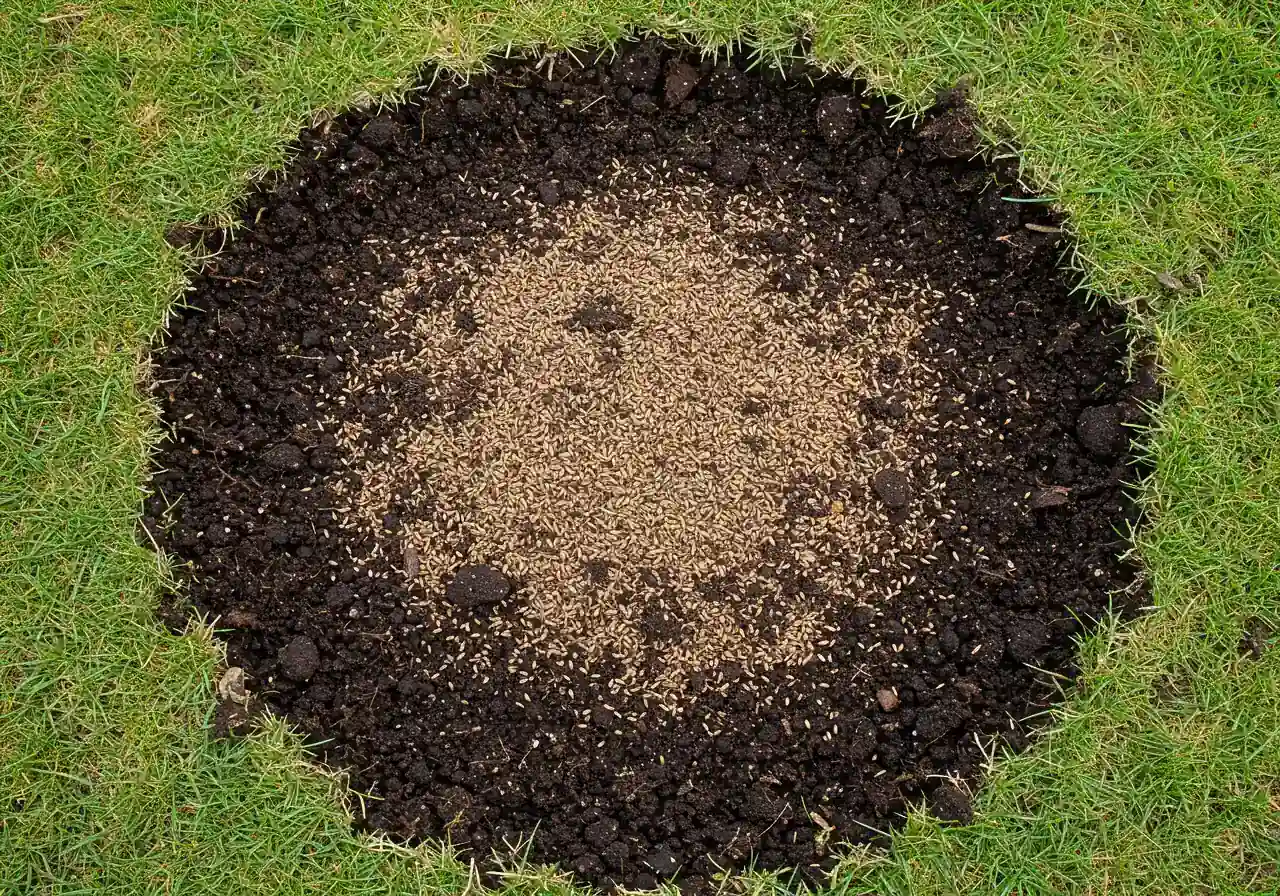
Step 1: Reviving the Lawn
Those grassy highways the voles left behind need some TLC. Don't worry, your lawn can bounce back!
- Gentle Raking: Start by lightly raking the runway areas. This clears out dead grass, improves air circulation, and lets you see the soil surface. Don't rake too hard – you don't want to damage healthy grass crowns nearby.
- Topdressing: If the runways are sunken, sprinkle a thin layer (about 1/4 to 1/2 inch) of good quality topsoil or compost mix over them. This helps level the area and provides nutrients. Learn more about soil preparation techniques.
- Overseeding: Now, scatter some grass seed suitable for Ottawa's climate (like a blend with fescues and Kentucky bluegrass) over the repaired areas. Gently rake it in so the seeds make good contact with the soil.
- Water Wisely: Keep the newly seeded areas consistently moist (not soaking wet) until the grass establishes.
For larger damaged areas, or if the damage extends near public walkways, sometimes a professional touch makes all the difference. Services like a dependable city property cleanup service can often handle lawn repairs along with other tidying tasks.
Step 2: Restoring Garden Beds
Voles can make a real mess of flower beds and veggie patches.
- Smooth and Amend: Rake the soil smooth, filling in any shallow tunnels. Work in some compost to replenish nutrients and improve soil structure.
- Replant and Renew: Replace plants that were too badly damaged or eaten entirely. This might even be an opportunity to rethink parts of your garden design! If you're looking at significant replanting or creating new beds to fill gaps, exploring professional custom garden install solutions can bring fresh ideas and expert execution. Check our transformations gallery for inspiration.
- Tidy Up the Edges: Once repairs are done, redefining your garden edges and applying fresh mulch can make a huge difference visually and practically. Proper professional mulching and edging not only looks sharp but helps suppress weeds and retain moisture, contributing to overall plant health and resilience.
Step 3: Assessing and Protecting Trees & Shrubs
Carefully re-examine the base of trees and shrubs for girdling (chewing all the way around).
- Minor Damage: If the gnawing isn't too deep or doesn't go all the way around, the plant might recover on its own. Keep it well-watered and monitor its health.
- Severe Girdling: Unfortunately, if the bark is chewed off completely around the trunk, the plant likely won't survive as nutrient flow is cut off. Removal might be the kindest option. See our about us page to understand our approach to landscape care.
- Protect Survivors: For trees and shrubs that survived, plan now to install protective hardware cloth barriers *before* next winter arrives!
Building Long-Term Resilience: A Simple Calendar
A healthy, well-maintained yard is naturally more resilient to pests like voles. Think seasonally:
Spring
Assess damage, make repairs (rake, seed, replant), clean up beds. Consider a professional spring cleanup.
Summer
Keep lawn mowed, weed regularly, monitor for any *new* vole activity (unlikely, but possible). Engage garden maintenance if needed.
Fall
Crucial prevention time! Do a thorough cleanup (Metcalfe property cleanup), mow lawn short, remove leaf litter, install tree guards, keep mulch away from trunks.
Winter
Relax, knowing you’ve taken steps to make your yard less inviting! Plan for next season's lawn care.
Repairing vole damage takes a bit of effort, but seeing your lawn green up and your garden flourish again is incredibly rewarding. You've got this! If you need help, don't hesitate to contact us.
Quick Wins Against Voles: Key Takeaways
Alright, dealing with voles can feel like a never-ending game of whack-a-mole (or rather, whack-a-vole!), but don't throw in the trowel just yet! Here are some quick takeaways – the essential bits to remember for keeping those furry little landscapers in check, especially around Ottawa neighbourhoods like Metcalfe where gardens are treasured.
Think of this as your cheat sheet for a vole-resistant yard:
- Fall Cleanup is Your Best Friend: Seriously, don't underestimate this! Mowing your lawn short one last time, removing leaf piles, and clearing garden debris *before* the snow flies is crucial. Voles love cozy winter hideouts, so take away their shelter. A tidy yard is a less tempting yard. If your property feels overwhelming, remember that a thorough Marionville property cleanup service can handle that big pre-winter tidy-up for you.
- Guard Your Trees and Shrubs: Young woody plants are prime vole targets in winter. *Before* snowfall, wrap the base of vulnerable trees and shrubs with 1/4-inch hardware cloth (wire mesh). Make sure it's about 18-24 inches high and buried 3-6 inches deep. Also, pull mulch and dense ground cover away from the base – create at least a foot of space they have to cross.
- Spring Lawn Repair ASAP: When the snow melts and reveals those grassy runways, act quickly! Gently rake out the dead grass, sprinkle on some topsoil or compost, and overseed the damaged spots. Good soil preparation makes a huge difference in how quickly the new grass establishes. For smaller urban spaces needing TLC, a specialized city yard cleanup service can often tackle these specific lawn repairs efficiently.
- Revitalize Garden Beds: Found tunnels and nibbled plants in your Metcalfe garden? Rake the soil smooth, mix in some compost to enrich it, and replace any plants that didn't make it. This is also a good time to apply fresh mulch (keeping it away from plant bases!). Getting your beds back in shape might seem daunting, but a focused Metcalf garden clean up service can make short work of rejuvenating those planting areas.
- Traps and Barriers (Use Wisely): If voles are actively causing trouble, mouse snap traps placed *in* their runways (and covered with a box or bucket for safety) can be effective. Physical barriers like the hardware cloth mentioned above are excellent prevention. Repellents can offer temporary relief. Think carefully and weigh the risks before considering toxic baits.
- Know When to Call for Backup: Feeling overwhelmed by the damage or the cleanup effort? There's no shame in getting help! Tackling widespread vole aftermath across your lawn and garden beds is a common task for professionals. An experienced Ottawa property cleanup service has the tools and know-how to efficiently restore your landscape, letting you get back to enjoying your beautiful Ottawa yard sooner. Check our thank you page after submitting a request!
Ottawa Vole FAQs: Your Local Questions Answered
Got vole questions swirling around like snowflakes in February? You're not alone! Here are some common queries we hear from fellow Ottawa residents facing these furry little lawn disruptors.
Our reliable, deep snow cover acts like a cozy roof for voles! It hides them from predators and the elements all winter, letting them create extensive runway tunnels and munch on grass roots and bark undisturbed until the spring melt reveals the damage.
Absolutely. Voles adore tender roots, bulbs (like tulips, crocus), and hostas. They also commonly chew the bark of young fruit trees and shrubs. Choosing vole-resistant plants and consistent proactive garden maintenance can help protect your prized greenery.
It can seem that way! Construction disturbs natural habitats, potentially pushing voles into established neighbouring yards seeking food and shelter. Adapting landscaping or restoring damaged areas are common needs; check out some inspiring Clean Yards landscape transformations for ideas on reclaiming your space.
Spring is peak season, right after the snow melts and you see the full extent of the damage. Professionals can efficiently handle lawn repairs, debris cleanup, and garden restoration. A reliable city yard cleanup service can assess the situation and get your yard back on track quickly.
Always prioritize safety for kids, pets, and wildlife. Use snap traps carefully covered within runways. If considering baits (rodenticides), read labels *meticulously* and use tamper-resistant stations. Hiring professionals ensures methods comply with local best practices, often outlined in their service details like these Clean Yards Terms and Conditions.
Reclaim Your Richmond Garden: Let Us Help You Win the War on Voles!
Okay, let's wrap this up! Seeing vole damage appear in your Richmond garden after a long Ottawa winter can feel like losing a battle you didn't even know you were fighting. Those winding lawn trails and chewed plants are definitely a headache. But remember, this is a war *you can win*, and you don't have to fight those furry nuisances alone!
We've covered the key strategies: making your yard less inviting with smart fall cleanup, protecting precious trees and shrubs with barriers, repairing lawn damage with simple raking and seeding, restoring your garden beds, and using targeted control methods when necessary. It might seem like a lot, but taking back your beautiful landscape is absolutely achievable.
Ready to wave the white flag at the voles and reclaim your outdoor oasis? Whether you're in Richmond, Manotick, Greely, Nepean, or any surrounding neighbourhood, we're here to help. Let our local expertise work for you. We understand Ottawa's unique challenges and have the solutions to repair the damage and get your yard looking its best again.
Don't let voles ruin your spring!
Request Your Free Estimate Today!Or learn more about our comprehensive Yard Care Services.

